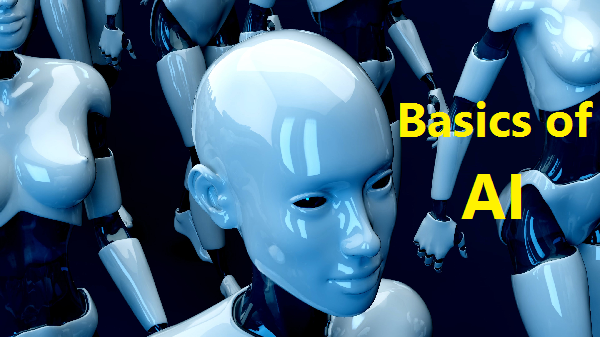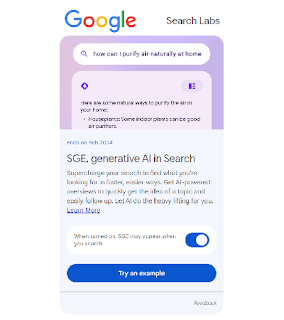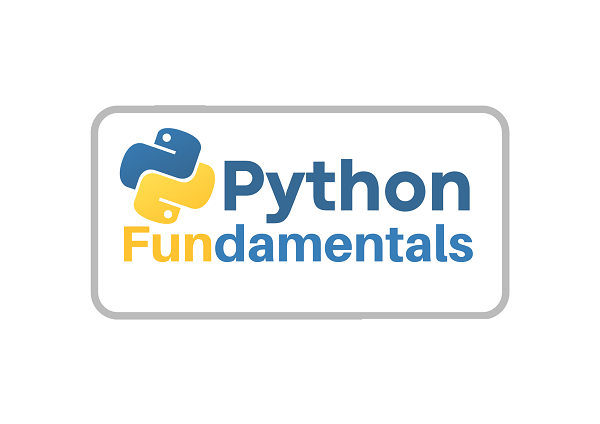Understanding the Basics of AI Without Technical Jargon
''Understanding the Basics of AI", breaks it down in a simple and easy-to-understand way. Check it out!
In this blog post, we explore the basics of AI and its different types, including rule-based AI, machine learning, and deep learning. We also discuss the working of AI and its various applications in today's world. By the end of this post, you will have a clear understanding of AI and its potential to transform our lives.
Artificial Intelligence
(AI) is a rapidly growing
field that is used to build intelligent machines that can perform tasks that
usually require human intelligence. The basic idea behind AI is to build
machines that can think, learn, and make decisions like humans. In this
tutorial, we will cover the basics of AI and how it works.
What is AI?
AI is the simulation of
human intelligence in machines that are programmed to think and learn like
humans. AI machines are designed to learn from their experiences and improve
their performance over time. There are different types of AI, now let's dive
into each of these types of AI and understand them in detail.
1. Rule-based AI:
Rule-based AI is based on
the idea of providing machines with a set of rules that they can follow to make
decisions. These rules are typically created by humans, and the machine follows
them to make decisions or take action.
For example, let's say we
want to build a chatbot that can answer simple customer queries. In this case,
we can define a set of rules for the chatbot to follow. For instance, if a
customer asks "What is the return policy?", the chatbot can be
programmed to look for the keywords "return" and "policy"
in the question and provide a pre-defined answer. In this way, rule-based AI
can be useful for solving specific problems that require a limited set of
rules.
Easy
example:
Let's say we want to
create a program that can grade an exam based on multiple-choice questions. We
can provide the program with a set of rules to follow, such as the correct
answer for each question, the weightage of each question, and the passing criteria.
The program can then use these rules to grade the exam automatically.
Medium
example:
Consider the task of
creating an automated system that can detect credit card fraud. In this case,
the system can be designed to look for specific patterns or anomalies in the
transactions, and if any such patterns are detected, the system can flag the
transaction as potentially fraudulent. Here, the rules can be a combination of
specific thresholds or limits for various parameters such as transaction
amount, location, and frequency.
Hard
example:
Let's say we want to
create a self-driving car that can navigate through complex traffic scenarios.
In this case, the car can be programmed with a set of rules to follow, such as
staying within the speed limit, stopping at red lights, and following traffic
signals. However, this approach is limited as the number of rules required for
a self-driving car to operate in a real-world scenario is vast, making it
impractical to create such a system using rule-based AI alone.
2. Machine Learning:
Machine learning is a
subset of AI that enables machines to learn from data without being explicitly
programmed. In this approach, the machine is trained on a dataset and learns to
recognize patterns or relationships in the data. This can then be used to make
predictions or decisions based on new data.
For example, let's say we
want to build a system that can detect spam emails. We can train a machine
learning model on a dataset of emails that are labeled as spam or not spam. The
machine learning model will learn from this data and identify patterns that
distinguish spam from non-spam emails. Once the model is trained, it can be
used to classify new emails as spam or not spam.
Easy
example:
Consider a program that
can predict whether a given stock will rise or fall in the next day. Here, the
program can be trained on a dataset of historical stock prices and relevant
market indicators. The program can then use this information to predict the
future stock prices.
Medium
example:
Let's say we want to
create a program that can recognize handwritten digits. We can train a machine
learning model on a dataset of handwritten digits and their corresponding
labels. The model can learn to recognize patterns in the data and make
predictions on new handwritten digits.
Hard
example:
Consider the task of
creating a program that can translate text from one language to another. In
this case, the program can be trained on a dataset of parallel texts in the
source and target languages. The machine learning model can learn to recognize
patterns in the data and make predictions on new text.
3. Deep Learning:
Deep learning is a subset
of machine learning that uses neural networks to learn and make decisions. In
this approach, multiple layers of neurons are used in the neural network to analyze and interpret data.
The layers closer to the input data are responsible for extracting low-level
features, while the layers closer to the output are responsible for combining
those features to make high-level decisions.
Deep learning is widely
used in image recognition, speech recognition, natural language processing, and
other complex tasks. It has been instrumental in the development of
self-driving cars, voice assistants, and recommendation systems.
Easy Example:
Image Classification
One of the most common
examples of deep learning is image classification. In this task, the neural
network is trained to classify images into different categories. For example, a
network can be trained to distinguish between different species of flowers.
Step-by-Step:
1.
Gather a dataset
of images with labels.
2.
Preprocess the
images by resizing them to a fixed size and normalizing their pixel values.
3.
Split the dataset
into training and testing sets.
4.
Build a neural
network architecture with input and output layers, and multiple hidden layers.
5.
Train the network
using the training set and a suitable optimization algorithm.
6.
Test the network
on the testing set and measure its accuracy.
Medium Example:
Natural Language Processing
Another example of deep
learning is natural language processing (NLP). In this task, the neural network
is trained to understand and generate human language. For example, a network
can be trained to generate coherent sentences based on a given prompt.
Step-by-Step:
1.
Gather a dataset
of text with labels or without labels.
2.
Preprocess the
text by tokenizing it into words, removing stop words, and converting it into
numerical vectors using techniques like word embeddings.
3.
Split the dataset
into training and testing sets.
4.
Build a neural
network architecture suitable for the NLP task, such as a recurrent neural
network (RNN) or a transformer.
5.
Train the network
using the training set and a suitable optimization algorithm.
6.
Test the network
on the testing set and measure its performance using metrics such as perplexity
or accuracy.
Hard Example:
Autonomous Driving
One of the most challenging
and ambitious applications of deep learning is autonomous driving. In this
task, the neural network is trained to perceive the environment and make
decisions based on the data from multiple sensors, such as cameras and lidars.
Step-by-Step:
1.
Gather a dataset
of sensor data from a vehicle, including images, lidar scans, and GPS
coordinates.
2.
Preprocess the
data by aligning the different sensor inputs, removing noise, and annotating it
with labels such as steering angle or acceleration.
3.
Split the dataset
into training and testing sets.
4.
Build a neural
network architecture suitable for the autonomous driving task, such as a
convolutional neural network (CNN) or a combination of CNNs and RNNs.
5.
Train the network
using the training set and a suitable optimization algorithm.
6.
Test the network
on a real vehicle in a safe and controlled environment, and measure its
performance using metrics such as safety and reliability.
How does AI work?
AI works by using
algorithms and mathematical models that are designed to mimic human
intelligence. The basic steps in building an AI system are:
Step 1: Define the
problem
The first step is to
define the problem that needs to be solved by the AI system. This step involves
identifying the specific task that the AI system will be designed to
accomplish. It is important to clearly define the problem in order to determine
the appropriate AI techniques to use.
To define the problem,
you should consider the following:
a. What is
the goal of the AI system? What are you trying to achieve?
b. What are
the inputs and outputs of the system?
c. What are
the constraints and limitations of the problem?
For
example, let's say we want to develop an AI system that can identify handwritten
digits. The goal of the system is to accurately recognize the digits in the
input image. The input would be an image of a handwritten digit, and the output
would be the corresponding digit (0-9). The constraints could include
limitations on the size of the input image or the processing power of the
system.
Once you have clearly
defined the problem, you can move on to the next step in the process, which is
to gather data.
Step 2: Data Collection
AI systems need data to
learn from. The first step in creating an AI system is to collect data that is
relevant to the problem at hand. This data can come from a variety of sources,
including sensors, databases, or user interactions.
Example: If
we want to build an AI system that can predict the weather, we would need to
collect data on temperature, humidity, pressure, wind speed, and other
weather-related factors.
Step 3: Data Preparation
Once we have collected
the data, we need to prepare it for use by the AI system. This might involve
cleaning the data, removing irrelevant or duplicate data points, and converting
the data into a format that the AI system can use.
Example: In
our weather prediction system, we might need to clean the data by removing any
data points that are missing values or are outliers.
Step 4: Model Creation
The next step is to
create a model that can use the data to make predictions or decisions. This
model can be a rule-based system, a machine learning algorithm, or a deep
learning neural network.
Example: In
our weather prediction system, we might use a machine learning algorithm such
as a decision tree or a neural network to predict the weather.
Step 5: Model Training
The model needs to be
trained using the prepared data so that it can make accurate predictions. The
training process involves adjusting the model's parameters to minimize the
error between the predicted values and the actual values in the training data.
Example: In
our weather prediction system, we would train the machine learning algorithm
using the prepared weather data and adjust the algorithm's parameters to
minimize the error between the predicted weather and the actual weather.
Step 6: Model Testing
Once the model has been
trained, it needs to be tested to see how well it performs on new, unseen data.
This testing process helps to ensure that the model is not overfitting to the
training data and can make accurate predictions on new data.
Example: In
our weather prediction system, we would test the machine learning algorithm
using new weather data that it has not seen before to see how accurate its
predictions are.
Step 7: Model Deployment
If the model performs
well on the test data, it can be deployed to make predictions or decisions on
new data. This might involve integrating the model into a larger system or
creating an API that other systems can use to make predictions.
Example: In
our weather prediction system, we might deploy the machine learning algorithm
as part of a weather app that users can download and use to get accurate
weather predictions for their location.
Overall, AI works by
processing data, creating a model that can make predictions or decisions based
on that data, training the model using prepared data, testing the model to
ensure it is accurate, and deploying the model to make predictions on new data.
Examples of AI:
Here are three examples
of AI that you might be familiar with:
Virtual Personal
Assistants: Siri, Alexa, and Google
Assistant are examples of virtual personal assistants that use natural language
processing to understand and respond to user requests.
Image Recognition: AI is used in image recognition software to recognize
faces, objects, and patterns in images.
Autonomous Vehicles: Autonomous vehicles are cars and trucks that use AI
to drive themselves.
Conclusion:
AI is a fascinating field with immense potential to transform the world we live in. With advancements in technology and increasing amounts of data, the possibilities of AI are endless. We hope this tutorial has given you a basic understanding of AI and how it works.




Comments
Post a Comment